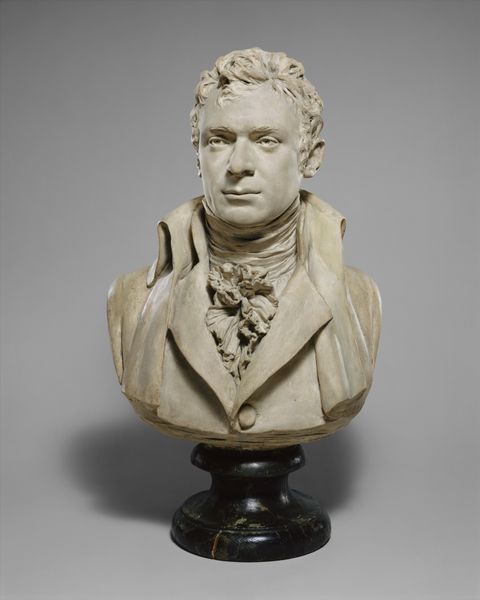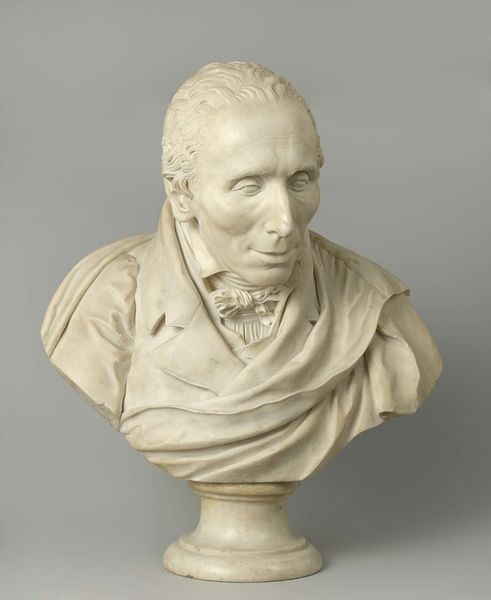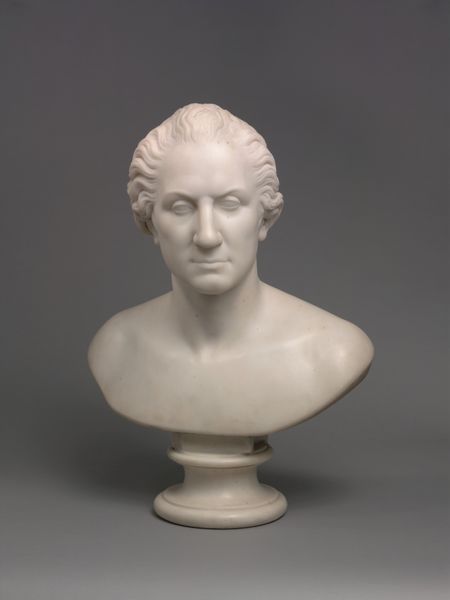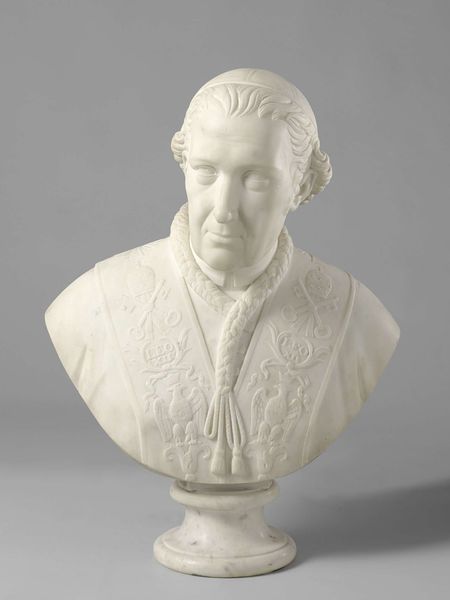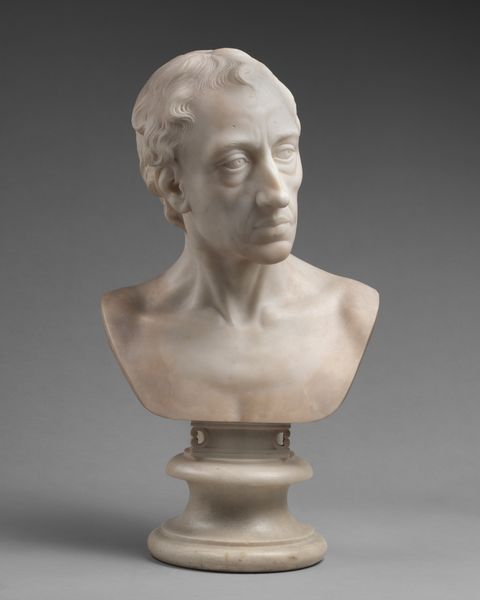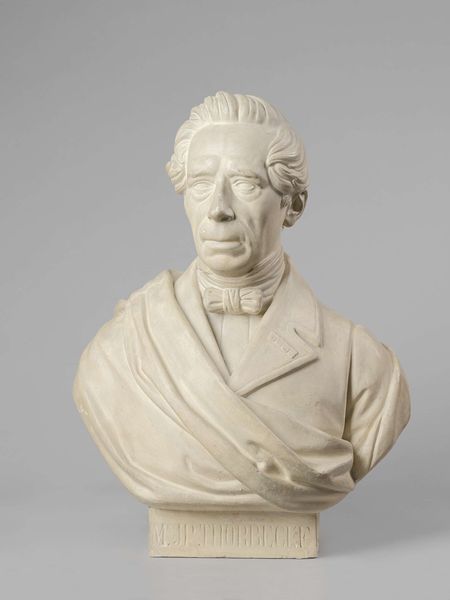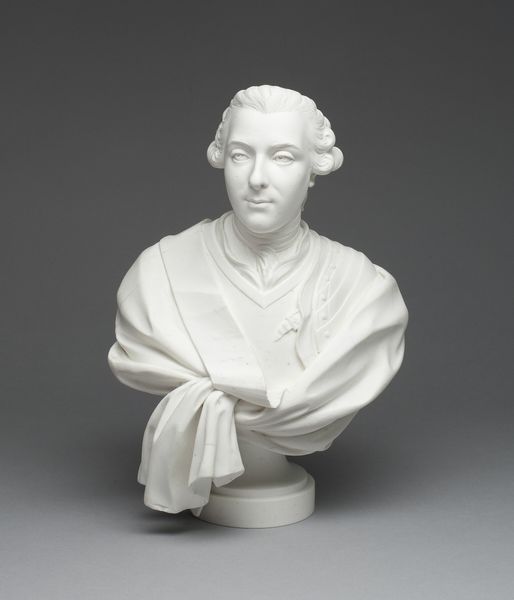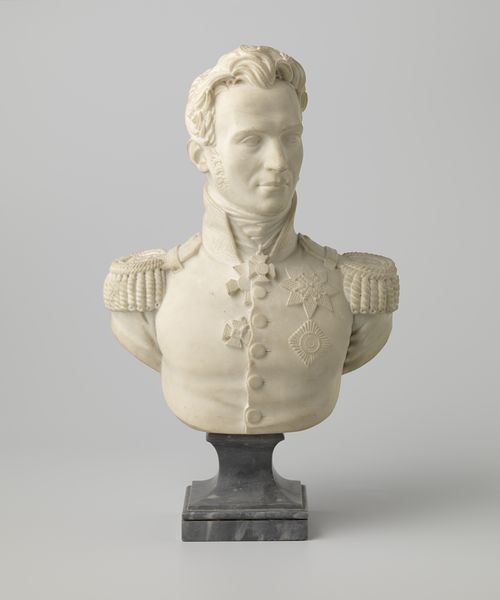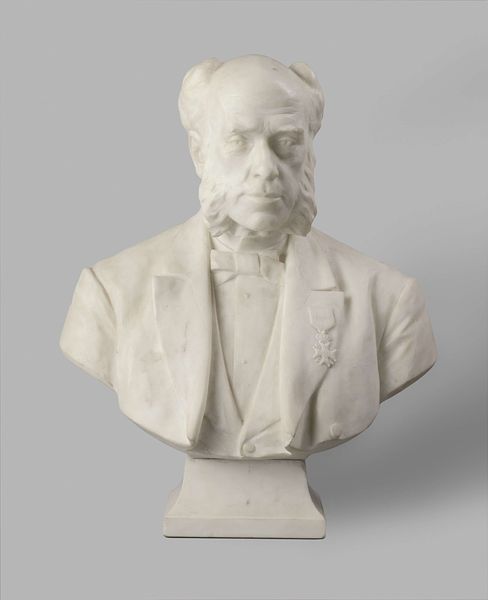
Bust of Cardinal Giacomo Antonelli 1859
0:00
0:00
sculpture, marble
#
portrait
#
neoclacissism
#
classicism
#
sculpture
#
marble
Dimensions: 83.8 × 72.4 × 36.8 cm (33 × 28 1/2 × 14 1/2 in.)
Copyright: Public Domain
Curator: Welcome. We're standing before Jean-Baptiste Clésinger's "Bust of Cardinal Giacomo Antonelli," crafted in 1859. It's a stunning marble sculpture here at The Art Institute of Chicago. Editor: It's certainly impressive. My immediate reaction is to its coolness. The stark white marble, the very smooth surfaces…it feels almost distant, but technically stunning. Curator: Classicism at its finest. Clésinger captures Antonelli's likeness with remarkable precision. The lines, the drapery—everything speaks to a refined aesthetic. Antonelli, of course, was a powerful figure, the Secretary of State under Pope Pius IX. His stern gaze speaks volumes. Editor: Indeed. The medium—that pristine Carrara marble—was likely chosen quite consciously to invoke imperial Roman authority and status, given the Cardinal's role. One wonders about the social and economic conditions that supported this level of artistic production— the quarrying, transportation, and skilled labor needed for its creation. Curator: Absolutely. Marble, traditionally, symbolizes purity and immortality, aspirations deeply woven into the church’s identity and Antonelli’s legacy within it. But what I find fascinating is how this piece participates in a longer line of power representation – you can feel the weight of history looking at this marble effigy, and the cultural memory the artist tries to call on, not only for the church, but the viewer as well. Editor: It raises interesting questions about labor and hierarchy too. The cost! Not just of materials, but of specialized labor to produce such detail and refinement. You wonder how many working-class families at the time of production had the chance to see a refined object like this. Curator: A potent observation, one that links directly to its value as cultural symbolism but that has been forgotten. Seeing it now allows that class commentary again. It makes us see power then as the artist renders Antonelli through classical artistic styles. Editor: Yes, seeing is, perhaps, re-seeing. Curator: Agreed. It prompts reflection on cultural ideals perpetuated, and the silent forces shaping art, society, and values during that time. Editor: Precisely. A compelling interplay between process, power, and perception indeed.
Comments
No comments
Be the first to comment and join the conversation on the ultimate creative platform.
